Genesis
A quick history and geography of Hinduism

What is Hinduism?
Religion is defined as a belief in a god or an all mighty power and the practice of worshipping the same entity, then Hinduism is a religion, in the most simplistic of terms. But so much more, the underlying principals of Hinduism have a focus on science, on learning, on living well, driving focus on being happy, and bringing happiness to others. Hindus are tasked to think, to listen, understand and not blindly follow a treatise or a doctrine.
Hinduism stands at a unique dichotomy that it is at the same time polythiestic and monotheistic. Hindus may choose to be Shaktas, Shaivites, Vaishnavas, Smarthas, depending on their personal preference, family, or identity. And yet they will happily pray to any of the multitude of gods for fulfillment of a physical or spiritual desire.
A devotee of Krishna, may remember him during his evening prayers or morning thoughts, but when he starts building a new house, or buys a car, he will pray to Ganesh as the destroyer of obstacles and to ensure that everything goes well. Amongst the multitude there will be those who will place great emphasis on the Vedic - Brahmanic defined rituals, and some who may follow the non-Vedic traditions. But one thing that binds them together is an understanding of and a value for the natural law.
Fundamentally, we believe in the existence of the Karmic wheel, wherein a person’s behaviour determines his future. And not even the gods and dieties are excused from these natural laws of prakriti (1). That most elementary of natural laws - that which is created must be destroyed - is obeyed inherently. So much so that even the creator of the world, will be destroyed for the end of time.
In the modern world, science and religion are usually set at odds, but traditionally, Hindus have always had a respect for the scientific and a desire to understand how the world works. It is said that the when the lord Ganesha was charged by the great sage Vyas to pen the Mahabharata, he was instructed not to write anything down until he understood what was being said. Incidentally the Mahabharata is word for word agreed to be the worlds longest epic poem, ten times longer than the Illiad and Odyssey combined.
Who is a Hindu?
Before we dig further into history, let’s try and understand the word Hindu.
The history of the 20th century determines the current map of the subcontinent, but politics thankfully cannot change natural geography. The subcontinent is well protected with the Himalayan ranges forming a natural border to the north, while the Indus river was a natural border on the west.
Let us take a step back in time however, to around 515 BCE. King Darius I of Persia had sent the greek explorer Scylax to follow the course of the Indus river.(2) The Greeks refered to the river as Indus and its people as Indói, literaly - the people of the Indus river.
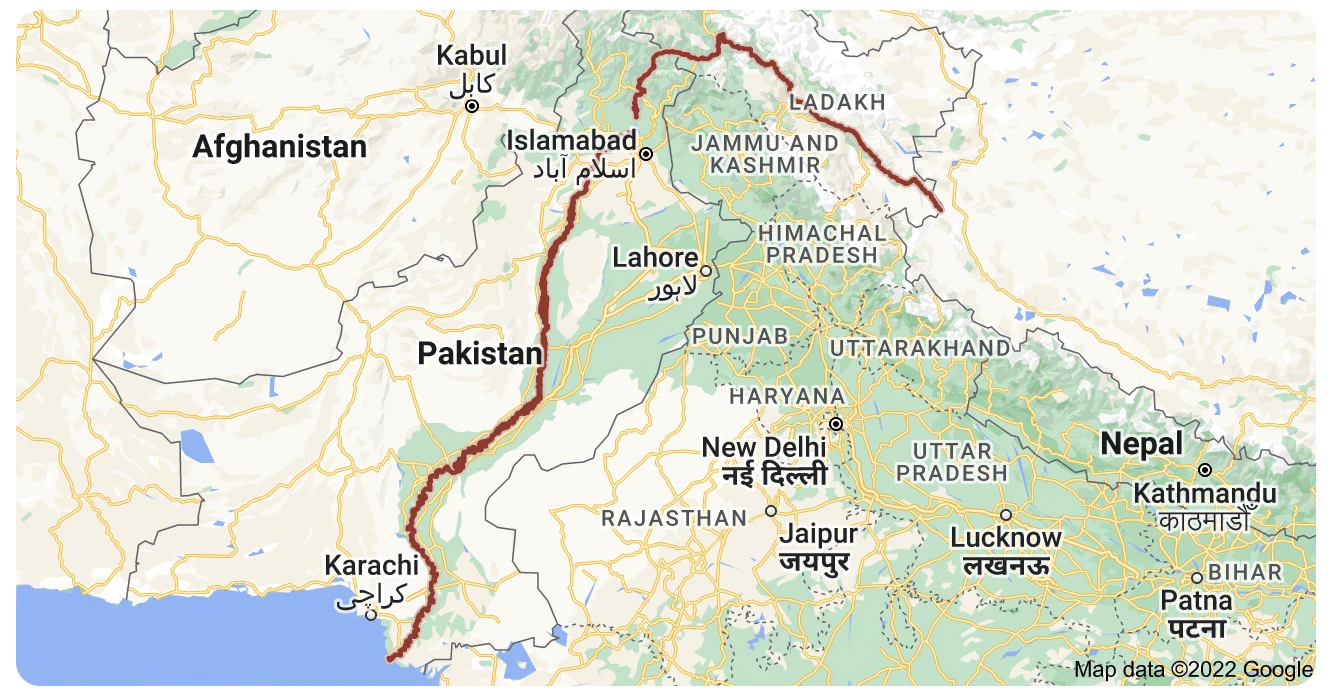
The people of the valley however called the river, the Sindhu. The root of the word in in Sanskrit. Sanskrit may be one of the decendants of early languages that developed in Central Asia and thus its cousins share commonality with other Indo European languages, derived from Proto-Indo-Iranian languages
Between 850 and 600 BCE a Proto-Iranian sound change of S to H (3) turned Sindhu to Hindu and Sindhustan (land beyond the Sindhu) to Hindustan.
At this point in time, Indói, Sindhustan was largely a geographic descriptor, referring to the the people of the Sindhu (Indus) valley and beyond. Most of the people beyond the river at this time were possibly practicing a variety of religions which share commonality with how it is codified today.
For the Greeks and the Persians the Indus became a border beyond which lay rich lands, trade and a friendly people. Rich trade means rich resources and India became a target for many a conqueror, some coming for wealth, some coming for personal achievement and some even coming to create a home.
Central Asia began changing in 9th century BCE with the changes in the Islamic Caliphate in the middle east, and the establishment of the Mamluk Sultanates from Egypt to present-day Afghanistan. Between 1001 and 1025 Mahmud of Ghazni started attacking India regularly, destroying temples and monuments including in the cities of Mathura and Somnath.
With the Delhi Sultante ruling India from 1206-1526, a clear distinction was made between the people sharing the Islamic and Turkic heritage of the Sultanate’s kings and non-Islamic people. The term Hindu was used to distinguish between the two. And thus did a people who were identified by a geographical, were now identified as a religion and a different people.
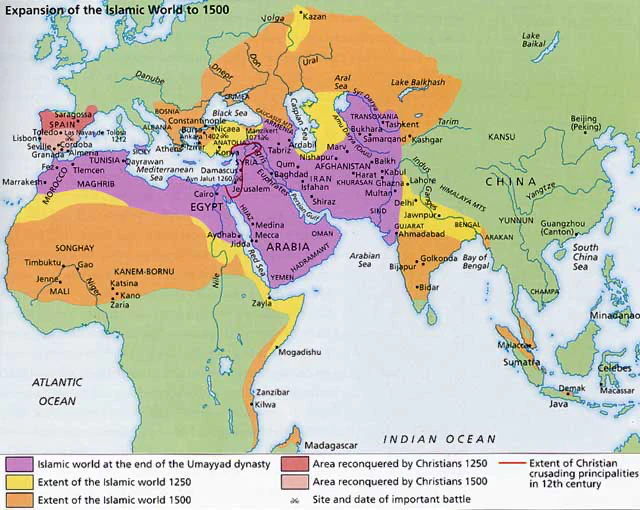
Ironically though - by this time India had had a golden period of religion with Buddhism and Jainism gaining adherence with rulers and the citizens starting from the 6th century BCE. With Sikhism established in the late 15 century CE, there were four major non-Islamic religions in India. By the 16th century CE, the term Hindu was applied to them all, forcibly merging thier identity.
It was the Portuguese & other Europeans (4) that used the term Hindoo (spelled not as commonly today with a ‘U’ but with a double ‘O’; a spelling that today some find derogatory) or Hindoostani to describe the people of the continent. European traders and missionaries further identified the people with the religion, giving birth to the term – Hindooism, between the 16th and 17th centuries CE.
The first signs of Gods and Worship
Hinduism is considerable older than the name given to it by the migrants, traders and invaders coming from Central Asia and Europe through the centuries.
The classical theory on the origins of Hinduism are not consistent, but it is believed that the roots of the faith can be traced back to the Indus Valley civilisation circa 4000 to 1900 BCE. The Indus valley civilisation was located in the north-western region of the Indian subcontinent, consisting of what is now mainly in present day Pakistan and parts of Rajashtan and Gujarat in India. The Harappan civilisation was one of the most advanced civilisation amongst its contemporaries. Highly urbanised, the principal cities of Harappa, Mohen-jo-Daro, Dholavira, Kalibangan and Lothal acted as trade centers for local merchants as well as traders from Mesopotamia and Egypt.

Archelogical digs in the Indus Valley revealed not just the signs of this trade, but a highly vibrant civilisation in the form of Seals, Teraccota Idols and Figurines, and toy animals and carts. The cities themselves demonstrated signs of planned urbanisation and hygience, with fire baked bricks, proper sewage, and giant public baths.
Despite this emphasis on cities and urban centers, the Harappan civilisation had a high regard for nature. A key example of this is visible in trade seals and pottery excavated from the period, which shows a multitude of animals, identifiable ones including buffalo, elephants, deer, rhinoceros and tigers.

This regard for animals extended into the the one of the two key dieties witnessed in the period - Pashupatinath, or lord of the animals. Pashupatinath was seen on seals as a figure with a horned crown, surrounded by animals, in a familiar yoga pose. Pashupatinath, was an earlier personification of Gods we now identify as Shiva - the eternal yogi.

Modern interpretation of Shiva aside, Pashupatinath has a nearer relationship with the Vedic god Rudra, also generally regarded as an early form of Shiva. Rudra is associated with asceticism, yoga, and linga; regarded as a lord of animals; and Shiva may be depicted with three heads.
What is even more intriguing, is the discovery of a Lingam or a Shivaling. The Linga, or at least a similar form of the Linga was also excavated in Kalibangan, though there is some controversy surrounding it, as it appears from as yet unpublished Excavation Reports of Kalibangan from the Archaelogical survey of India.(5). Shiva in the Linga form is the most identifiable and worshipped form of Shiva in modern Hinduism.

Though none of the digs specifically identify any buildings as temples, there have been a large number of female figurines excavated across the cities. The number of excavated female figurines has been higher than any male counterparts. The civilization obvioulsy put a high importance on the female form.
The idea of Mother Goddess is associated with the idea of motherhood, fertility, procreation and the continuity of life. Harappan female figurines may have had cultural significance in the sense that these figurines may have been worshipped in households.

Other versions of the sculpture of Mother Goddess that have been found have slight variations such as a pot-bellied type figurine which may represent pregnancy and thus also the idea of continuity of life. This ‘matronly’ version where the mother goddess is pot-bellied or has a child in her arms has been found in large numbers in sites like Mohenjodaro, Harappa and Banawali.
One of the largest female figurines found at Harappa has a (badly broken) fan-shaped pannier headdress with black residue in the cups of the panniers and a forward-projecting face. She is heavily ornamented with an elaborate choker and two other necklaces, each with three strands and many pendants. This elaborate ornamentation of figurines is one reason that female figurines have often been interpreted as deities.(6)

Feminine divinity continues to play an extremely important part in modern Hinduism well reflected in the figures of Durga, Kali and other goddesses. The physical characteristics of a mother as well as a diety are mentioned in literature as well as sharing commonalities between the figurines in the Indus valley and 11th century CE Chola Kingdom bronze figures.
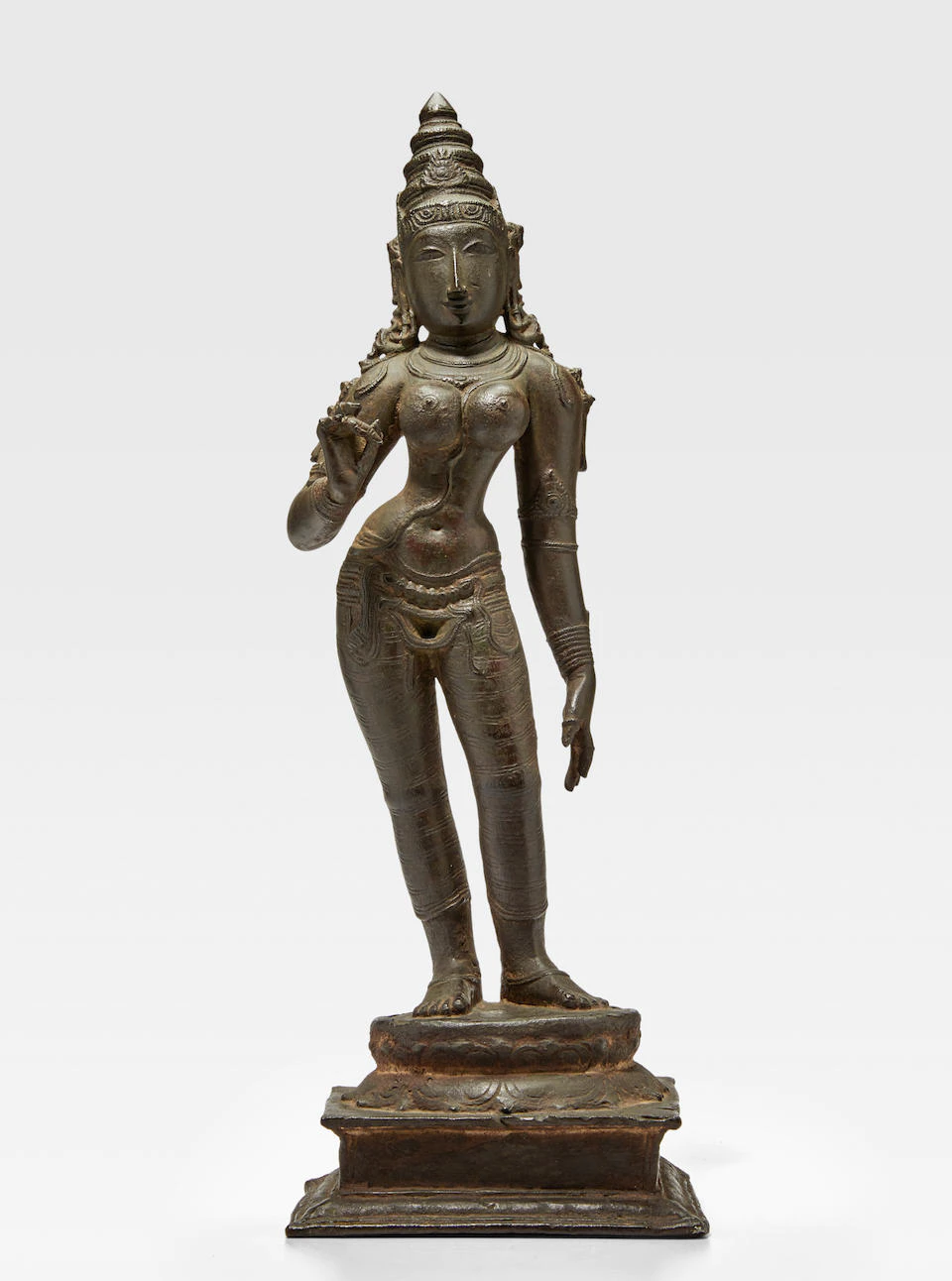
Figurines share elaborate headresses, mulitple items of jewellery, a knowing smile and prominent breasts, thus preserving the importance of the female diety and their role in life.
From India to the World
Interestingly the discovery of Harappa did not happen until 1856 when British colonial officers overseeing the construction of a road between Lahore and Karachi found labourers using some old bricks they found. Until the time actual digs began in the 1920s, it was believed that the Indian civilisation was actually formed in the Gangetic plains in central India around 1250 BCE. The river Ganga, its mountain source and its plains became the land of many of the heros of the Hindu faith.
Ancient Indo-European migrants - the Aryans - cattle herders and tribesmen would have found the highly fertile plains between the Indus, the Ganges and the Yamuna, a viable place to put down roots and become farmers. It was believed that the Aryan Invaders were the part of the reason of the demise of the Indus Valley civilisations, it is now believed that the Indus Valley Civilisation may have collapsed from other causes like floods and the timing of one collapse and rise may have been co-incidental.
Catastrophic floods & Aryan invasions may have forced the survivors of the early civilisation across the mountain ranges of Central India and into the Dravidic plateau. But they took their gods and worship styles with them. Its intriguing that even today, while the Gods that are worshipped are the same, styles of worship change subtly when you move through the country.
The Aryans took the worship of these gods and formed the start of the Vedic periods of Hinduism.
As per the 2001 census of India(7) there were 827 million Indians identified as Hindu. If you look at global data from mulitple sources in 2020, there are approximately 1.2 billion Hindus worldwide, making it the 3rd largest religion in the world. While many of this spread may be due to modern migration, there is a clearly recorded history of the spread of Hinduism to South East Asia.
Over the centuries Hinduism had expanded to Myanmar, Ceylon, Thailand, Java, Cambodia, Malaysia and Philipines. Cambodia (through its Ancient name Kamboj) is also mentioned in the Epic Mahabharat. The opening of trade routes and strong navies aided this spead.
There are two specific paths of expansion which led to the growth of a Hindu sphere of influence in these countries starting from circa 1st Centure CE. One from the Northern route from the Gangetic plains into Mayanmar and another from the Southern and Eastern part of the country into Java and Sumatra.
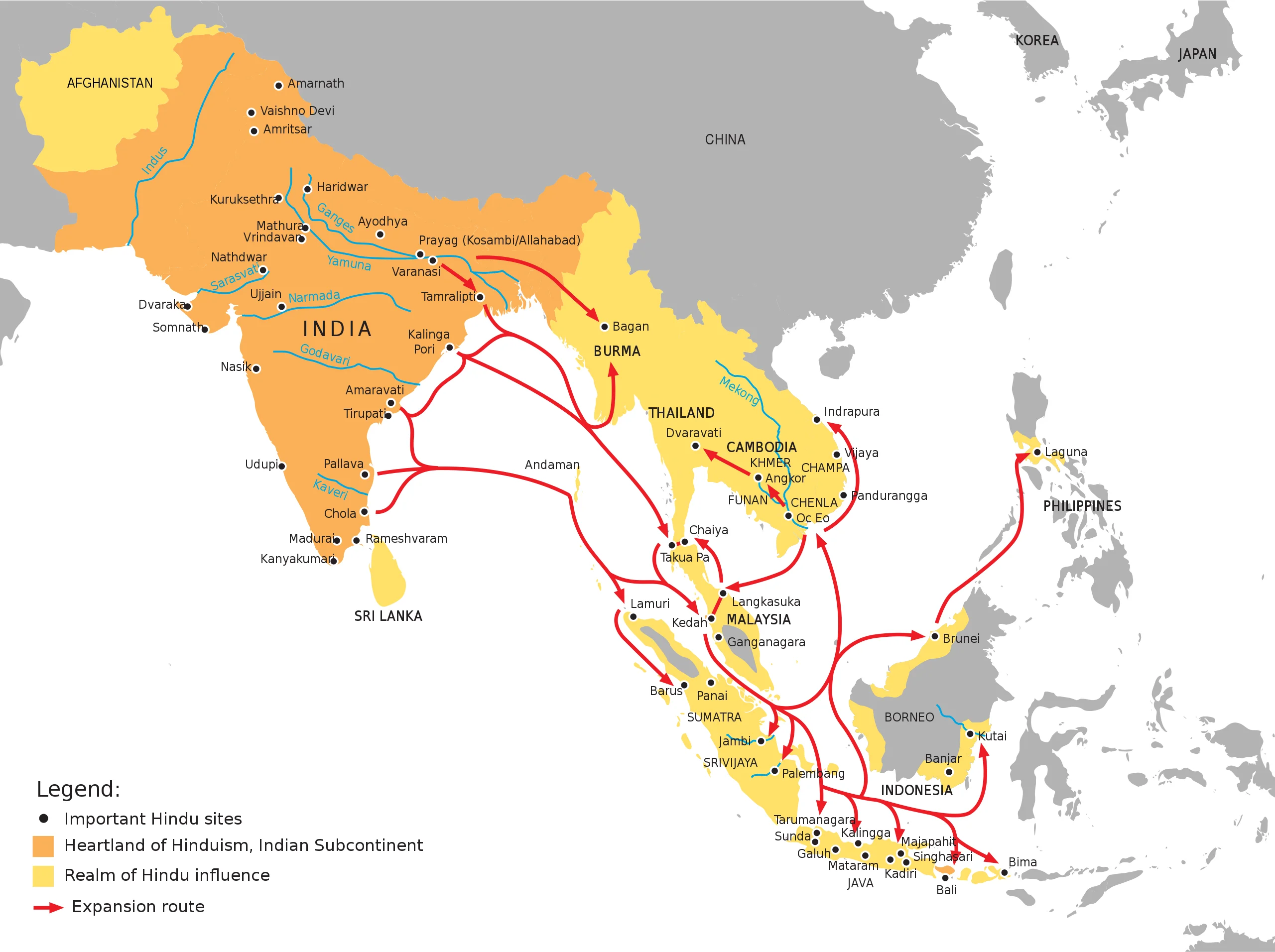
These Kingdoms adopted and adapted specific Hindu texts, theologies, rituals, architectural styles, and forms of social organization that suited their historical and social conditions. To cite an example - Cambodia where Hinduism became the official state religion of the Khmer kings and led to the construction of the great temple complexes of Angkor.
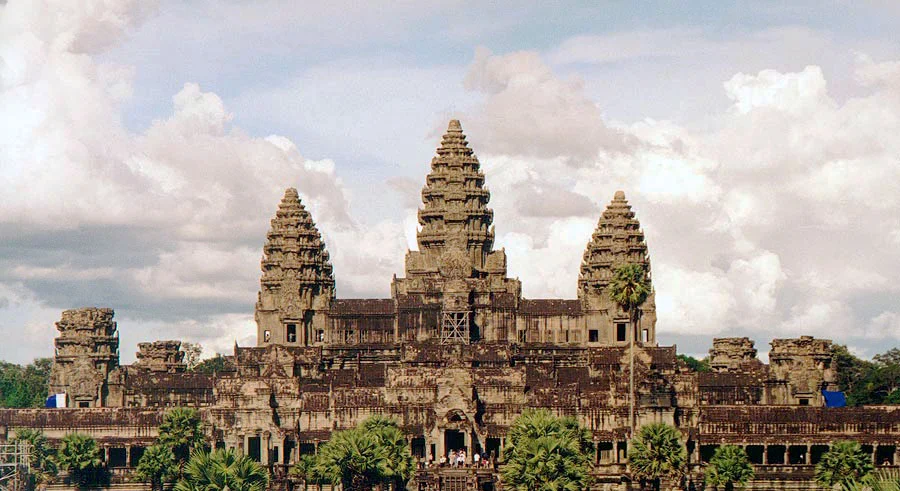
A few centuries later, Buddhism would also follow the same routes in its spread beyond the country of it’s birth, also adding China, Korea and Japan, and find patronage amongst the same peoples and kingdom’s that first adopted Hinduism.
The strength of these trade routes is exceptional, as in future centuries they were the routes used for the spread of Christianity and Islam.
In search of an Identity
The worlds great religions take their name from that which they follow. Buddhists and Christians adhere to the teachings of Sakyamuni Buddha and Jesus Christ respectively. Islam literally means ‘Total Surrender’ to the will of God, while Sikhism derives its name from the root word Sikh, literally ‘Students’ of the Gurus.
And yet for the Hindu, the name was a moniker that they did not identify with. We were the people of Bhārata-varṣa, named for an ancient hero and king - Bhārat, who had unified many states into one homogenous empire. He was the ancestor of the demi-god heros of the Mahabharata and had created a golden kingdom where people had no fear and could lead their lives in peace. The official hindi name of India is “Bharat” derived from this ancient name.
The Chola kings of South India belived they decended from Ishkvaku, another god-king and ancestor of Ram, one of the most revered incarnations of Vishnu.
Historical theories suggest that the Hindu identity really developed in the British colonial era, though it had started developing post-8th century CE after the Muslim invasions and the Hindu–Muslim wars.
A sense of Hindu identity and the term Hindu first appears in some texts dated between the 13th and 18th century in Sanskrit and Bengali. In the 14th- and 18th-century Indian poets such as Vidyapati, Kabir and Eknath used the phrase Hindu dharma (Hinduism) and contrasted it with Turaka dharma (Islam).
There are changes in classical Hinduism which we see changed due to the impact of the Islamic and European religions and people. In a sense to defend thier faith against the new religions, Hindus changed some of the behaviours and ways of living.
Take for example clothes. The Mahabhata describes most individuals male or femal, simply having two garments. One to wrap around the torso and one to simply wrap around the body. There was no shame in women not having a completely covered upper body or head. Carvings in the temple complexes of Khajuraho have explicit carvings, of barely dressed males and females and also that may be considered sexual.
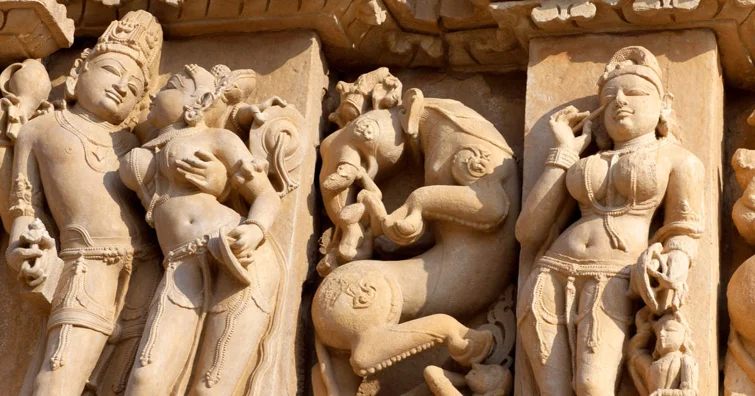
We were nature worshippers and we understood the laws of nature and the importance of the sexual act not just for procreation but also as an expression of love.
However when these beliefs were compared with the concept of original sin, prudity and the only achievment of life was to ensure that you got to heaven, Hindu’s were likely compared to unintelligent paganistic people. The easiest defence in any situation like this is to adapt to the beliefs of those mocking you. And thus we adopted the concepts of these faiths, including prudity, segregation of sexes and viewing with shame, the natural act of sex.
In building this defence against invaders, Hindus codified and enforced the caste system, which hiterto was based on a person’s desire to do a type of work but now was defined by birth. One of the greates evils that the nation still suffers from.
Today, Hindus living in a global environment recognize and value the fact that their religion has developed in the specific context of the Indian subcontinent. When Hindus speak of their religious identity, they emphasize its continuous, existence and the fact that it describes a web of customs, obligations, traditions, and ideals that far exceeds the Western tendency to think of religion primarily as a system of beliefs.
To us Hinduism is not a religion but a way of life.
Comments and feedback
I hope you enjoyed this article. For any comments, feedback or specific request, please do write to akhilesh@asabharwal.com.
Apart from historical fact, any opinion presented above is my own. I have no intention to invite any political controversy and I will summarily mark as spam and delete any irrational political comments. I invite debate, but not argument for argument’s sake.
Featured Image: Shiv & Parvati on Nandi; Relief from the Meenakshi Temple in Madurai.